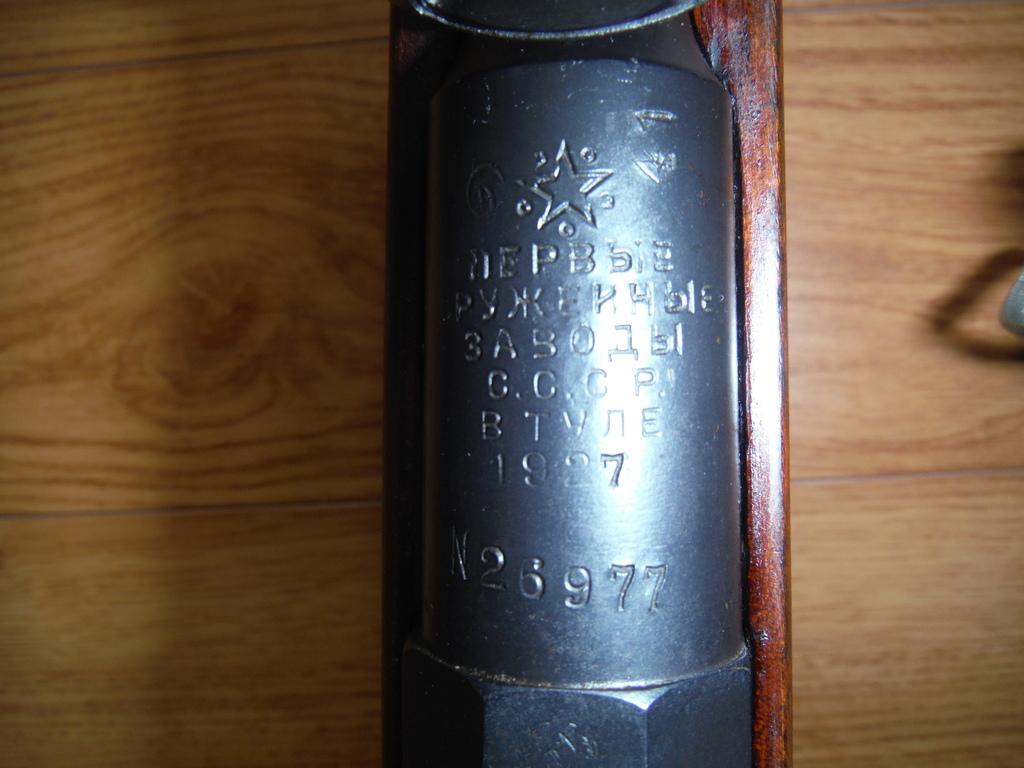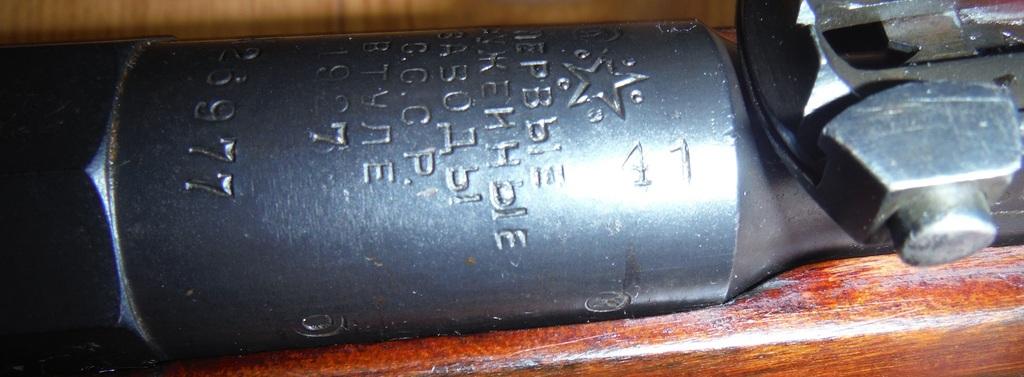-
Legacy Member

-
Thank You to Eaglelord17 For This Useful Post:
-
07-24-2015 12:49 PM
# ADS
Friends and Sponsors

-
FREE MEMBER
NO Posting or PM's Allowed

The Finns sanded/stripped the finish on a good percentage of captured guns. Most of those received an oil finish. Looks good to me, as it is not excessively "bubba" shiny. They also ground and re-matched the bolt.
Good pick-up. These are getting less common to find on the market in the U.S. Not sure how many are floating around in Canada , either.
, either.
-
Legacy Member

Well this is the first I have seen for sale in Canada and I have been looking for years. I always figured I would have to import one from the States to complete my collection, but this one just happened along and for what I would consider to be a reasonable price (especially considering I don't have to pay for it, pay for the import fees and pay for dollar conversion rate).
and I have been looking for years. I always figured I would have to import one from the States to complete my collection, but this one just happened along and for what I would consider to be a reasonable price (especially considering I don't have to pay for it, pay for the import fees and pay for dollar conversion rate).
The rifle came with some sling protectors (the little metal bits that go in the stock around the sling holes), and the screws for them, but they are slightly oversized. A question I have is should I inlet the stock slightly to put them in or should I just leave it as is?
-
-
Legacy Member

It was my understanding that the 41 stamp on the receiver indicated that it was captured by the Germans and perhaps sold to the Finns. I understood that it was the Germans who stamped it before selling it to the Finns. I didn't think that the 41 necessarily meant that it was sold to the Finns in 1941 by the Germans but anytime between 1941 and 1945. Remember that the Germans were capturing huge numbers of Mosin Nagant rifles after their invasion of Russia . I also understood that the Germans stamped 41 on the receiver upon capturing the rifle regardless of what they intended to do with it. In other words the 41 stamp only indicates that the rifle was captured by the Germans at some point during WW2. I suspect that some weapons changed hands several times on the Eastern front. The Finns would have been capturing rifles themselves directly from the Russians but not nearly as many as the Germans. In my collection I have a WW2 example of the rifle with the 41 stamp on the receiver which hasn't gone through a refurb programme. If I remember I will have a look to see if the rifle was made after 1941.
. I also understood that the Germans stamped 41 on the receiver upon capturing the rifle regardless of what they intended to do with it. In other words the 41 stamp only indicates that the rifle was captured by the Germans at some point during WW2. I suspect that some weapons changed hands several times on the Eastern front. The Finns would have been capturing rifles themselves directly from the Russians but not nearly as many as the Germans. In my collection I have a WW2 example of the rifle with the 41 stamp on the receiver which hasn't gone through a refurb programme. If I remember I will have a look to see if the rifle was made after 1941.
I may be totally wrong with all of the above as I wouldn't consider myself an expert on Russian weapons but perhaps some-one with more knowledge than myself can confirm or correct any of the above, please?
-
-
FREE MEMBER
NO Posting or PM's Allowed

You are correct on the application of the 41 stamp, Eaglord17. The following thread shows a picture of the actual orders given to the Finnish armorers. The 41 denotes a Continuation War capture,
armorers. The 41 denotes a Continuation War capture,
http://forums.gunboards.com/showthre...a-capture-mark
-
Legacy Member

I have had a look at my Mosin Nagent rifle (U.K. deactivated) with the 41 stamp on the receiver and the rifle was manufactured in 1943. This date is the manufacture date and not a refurb date. Clearly the 41 stamp couldn't have been applied before 1943.
-
-
FREE MEMBER
NO Posting or PM's Allowed

The 41 stamp was applied to many Continuation War captured rifles, early and late manufacture date. It was not indicative of when the rifle was captured, only that it taken during the time frame of the conflict, June 1941 to September 1944. A 1943 dated rifle falls into the time frame during which the stamp was applied.
On a side note, that '43 is among the latest models of Finn captures, and should be cherished. Not many of them exist! Of my dozen or so Finn captures, 1941 is the latest manufacture date in the collection.
-
Legacy Member

Is there a way of telling if a rifle with the 41 stamp was a Finn capture or a German capture sold to the Finns? I believe that the weapons that the Germans captured but retained for there own use they often put their own form of identification on the weapon ending it with a letter indicating the country of origin? For example, a captured U.K. weapon an "E", an abbreviation of English?
capture sold to the Finns? I believe that the weapons that the Germans captured but retained for there own use they often put their own form of identification on the weapon ending it with a letter indicating the country of origin? For example, a captured U.K. weapon an "E", an abbreviation of English?
-
-
FREE MEMBER
NO Posting or PM's Allowed

In general, no. The Germans did not clearly mark all of the captured Soviet guns which they sold/provided to Finland
guns which they sold/provided to Finland . But some will have a legitimate KRU-1 stock cartouche - and others will be faked. Be careful to examine any Nazi marks for authenticity on a Mosin Nagant.
. But some will have a legitimate KRU-1 stock cartouche - and others will be faked. Be careful to examine any Nazi marks for authenticity on a Mosin Nagant.
The other general indicator is a blued bolt, which was presumably done by the Nazis before the transfer to Finland.
I believe these guns would be a separate lot from the Continuation War captured guns with the 41 stamp.
-
Legacy Member

Ok heres a question then. I have a M91 Infantry Rifle which is was manufactured in 1926 by the Soviets (you can see it in the last two photos), and the bolt is blued. You know it spent time in Finland due to how the sights have been played with but other than that, there is no SA markings or such on the rifle. It also is a mixmaster with the magazine and I believe the bolt being Remington manufacture.
due to how the sights have been played with but other than that, there is no SA markings or such on the rifle. It also is a mixmaster with the magazine and I believe the bolt being Remington manufacture.
Was there anyone else who blued the Mosin Nagants bolts or was it just Nazi Germany ? The bolt isn't original to the rifle as it is a Remington bolt, so who would have blued it then unless it came from the factory like that?
? The bolt isn't original to the rifle as it is a Remington bolt, so who would have blued it then unless it came from the factory like that?
-
collection. I managed to acquire a Soviet production M1891 Dragoon which is a Finnish
Capture. Manufactured in 1927 by Tula. From what I understand due to the 41 on the receiver it would have been captured during the Continuation War. The front sight I believe has been replaced by the Finns, and the stock has been sanded (did the Finns do this or is this the work of Bubba?). The handguard is off a M91/30 which would have been a acceptable replacement for a broken one. It is also interesting that the Bolt matches the Receiver. Here are some photos, any info that can be added is appreciated.
 Information
Information























 PM
PM







